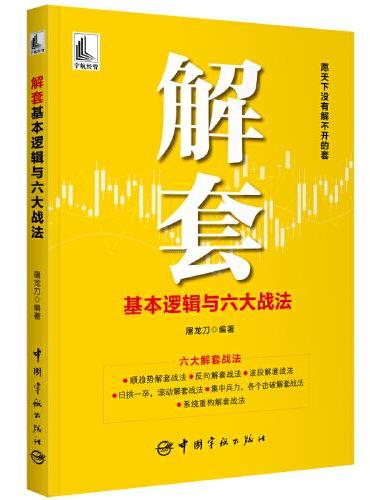新書推薦:

《
真想让我爱的人读读这本书
》
售價:NT$
269.0

《
解套基本逻辑与六大战法
》
售價:NT$
274.0

《
超级制造
》
售價:NT$
671.0

《
明朝270年:明朝的外交博弈和权力游戏
》
售價:NT$
325.0

《
禅之道(畅销全球60余年的一代经典,揭示禅对现代人的解脱意义)
》
售價:NT$
386.0

《
改变历史的意大利豪门 : 传奇家族美第奇
》
售價:NT$
420.0

《
Procreate插画手绘从新手到高手
》
售價:NT$
493.0

《
山河不足重 重在遇知己
》
售價:NT$
252.0
|
| 內容簡介: |
移动通信技术的持续发展催生了基于位置服务(LBS)的广泛应用。这类新型应用需要存储并管理移动对象不断变化的位置信息。这本由孟小峰、丁治明、许佳捷著的《移动对象管理模型技术与应用第2版英文版精》针对移动对象数据管理问题,从位置服务的角度分析频繁的位置变化给传统数据库所带来的挑战。本书系统介绍了移动对象建模与位置跟踪、索引、查询处理与优化、轨迹聚类、不确定性处理、隐私保护等领域的最新研究成果,以及相关成果在智能交通系统中的应用。
本书的读者对象为高等院校计算机专业的本科生、研究生、教师,科研机构的研究人员以及相关领域的开发人员等。
|
| 目錄:
|
1 Introduction
1.1 Concept of MovingObjects Data Management
1.2 ApplicationsofMovingObjectsDatabase
1.3 Key Technologiesin Moving Objects Database
1.3.1 MovingObjects Modeling
1.3.2 Location Trackingof Moving Objects
1.3.3 MovingObjects Database Indexes
1.3.4 UncertaintyManagement
1.3.5 MovingObjectsDatabaseQuerying
1.3.6 Statistical Analysis and Data Mining of MovingObject Trajectories
1.3.7 LocationPrivacy
1.4 Applicationsof Mobile Data Management
1.5 Purposeof This Book
References
2 Moving Objects Modeling
2.1 Introduction
2.2 Representative Models
2.2.1 MovingObject Spatio-TemporalMOST Model
2.2.2 Abstract Data Type ADT with Network
2.2.3 Graph of Cellular Automata GCA
2.3 DTNMOM
2.4 ARS-DTNMOM
2.5 Summary
References
3 Moving Objects Tracking
3.1 Introduction
3.2 Representative Location Update Policies
3.2.1 Threshold-BasedLocation Updating
3.2.2 Motion Vector-Based Location Updating
3.2.3 Group-BasedLocation Updating
3.2.4 Network-ConstrainedLocation Updating
3.3 Network-ConstrainedMoving Objects Modeling and Tracking
3.3.1 Data Model for Network-ConstrainedMovingObjects
3.3.2 Location Update Strategies for Network-ConstrainedMoving Objects
3.4 A Traf.c-AdaptiveLocation Update Mechanism
3.4.1 The AutonomicANLUM ANLUM-A Method
3.4.2 The Centralized ANLUM ANLUM-C Method
3.5 A Hybrid Network-ConstrainedLocation Update Mechanism
3.6 Summary
References
4 Moving Objects Indexing
4.1 Introduction
4.2 Representative Indexing Methods
4.2.1 The R-Tree
4.2.2 The TPR-Tree
4.2.3 The Spatio-TemporalR-Tree
4.2.4 The Trajectory-BundleTree
4.2.5 The MON-Tree
4.3 Network-Constrained Moving Object Sketched-TrajectoryR-Tree
4.3.1 Data Model
4.3.2 IndexStructure
4.3.3 IndexUpdate
4.3.4 Query
4.4 Network-Constrained Moving Objects Dynamic Trajectory R-Tree
4.4.1 IndexStructure of NDTR-Tree
4.4.2 Active TrajectoryUnit Management
4.4.3 Constructing, Dynamic Maintaining, and Queryingof NDTR-Tree
4.5 Summary
References
5 Moving Objects Basic Querying
5.1 Introduction
5.2 Classi.cations of Moving Object Queries
5.2.1 Based on Spatial Predicates
5.2.2 Based on TemporalPredicates
5.2.3 Based on Moving Spaces
5.3 Point Queries
5.4 NN Queries
5.4.1 Incremental Euclidean Restriction
5.4.2 Incremental Network Expansion
5.5 Range Queries
5.5.1 Range Euclidean Restriction
5.5.2 Range Network Expansion
5.6 Summary
References
6 Moving Objects Advanced Querying
6.1 Introduction
6.2 Similar Trajectory Queries for Moving Objects
6.2.1 Problem Definition
6.2.2 Trajectory Similarity
6.2.3 Query Processing
6.3 Convoy Queries on Moving Objects
6.3.1 Spatial Relations AmongConvoy Objects
6.3.2 Coherent Moving ClusterCMC
6.3.3 Convoy Over Simplified Trajectory CoST
6.3.4 Spatio-TemporalExtension CoST*
6.4 Density Queries for MovingObjects in Spatial Networks
6.4.1 Problem Definition
6.4.2 Cluster-Based Query Preprocessing
6.4.3 Density Query Processing
6.5 Continuous Density Queries for Moving Objects
6.5.1 Problem De.nition
6.5.2 Building the Quad-Tree
6.5.3 Safe Interval Computation
6.5.4 Query Processing
6.6 Summary
References
7 Trajectory Prediction of Moving Objects
7.1 Introduction
7.2 UnderlyingLinear Prediction LP Methods
7.2.1 General Linear Prediction
7.2.2 Road Segment-Based Linear Prediction
7.2.3 Route-Based Linear Prediction
7.3 Simulation-Based Prediction SP Methods
7.3.1 Fast-Slow Bounds Prediction
7.3.2 Time-Segmented Prediction
7.4 Uncertain Path Prediction Methods
7.4.1 Preliminary
7.4.2 Uncertain Trajectory Pattern Mining Algorithm
7.4.3 Frequent Path Tree
7.4.4 Trajectory Prediction
7.5 Other Nonlinear Prediction Methods
7.6 Summary
References
8 Uncertainty Management in Moving Objects Database
8.1 Introduction
8.2 Representative Models
8.2.1 2D-Ellipse Model
8.2.2 3D-Cylinder Model
8.2.3 Modelthe Uncertainty in Database
8.3 Uncertain Trajectory Management
8.3.1 Uncertain Trajectory Modeling
8.3.2 Database Operations for Uncertainty Management
8.4 Summary
References
9 Statistical Analysis on Moving Object Trajectories
9.1 Introduction
9.2 Representative Methods
9.2.1 Based on FCDs
9.2.2 Based on MODs
9.3 Real-Time Traffic Analysis on Dynamic Transportation Net
9.3.1 ModelingDynamic TransportationNetworks
9.3.2 Real-Time Statistical Analysis of Traffic Parameters
9.4 Summary
References
10 Clustering Analysis of Moving Objects
10.1 Introduction
10.2 Underlying Clustering Analysis Methods
10.3 Clustering Static Objects in Spatial Networks
10.3.1 Problem Definition
10.3.2 Edge-Based Clustering Algorithm
10.3.3 Node-Based Clustering Algorithm
10.4 Clustering MovingObjects in Spatial Networks
10.4.1 CMON Framework
10.4.2 Constructionand Maintenance of CBs
10.4.3 CMON Construction with Different Criteria
10.5 Clustering Trajectories Based on Partition-and-Group
10.5.1 Partition-and-Group Framework
10.5.2 Region-Based Cluster
10.5.3 Trajectory-Based Cluster
10.6 Clustering TrajectoriesBased on Features Other Than Density
10.6.1 Preliminary
10.6.2 Big Region Reconstruction
10.6.3 Parameters Determinationin Region Refinement
10.7 Summary
References
11 Dynamic Transportation Navigation
11.1 Introduction
11.2 TypicalDynamicTransportationNavigationStrategies
11.2.1 D* Algorithm
11.2.2 Hierarchy Aggregation Tree Based Navigation
11.3 Incremental Route Search Strategy
11.3.1 Problem Definitions
11.3.2 Pre-computation
11.3.3 Top-KIntermediate Destinations
11.3.4 Route Search and Update
11.4 Summary
References
12 Location Privacy
12.1 Introduction
12.2 Privacy Threats in LBS
12.3 System Architecture
12.3.1 Non-cooperative Architecture
12.3.2 Centralized Architecture
12.3.3 Peer-to-Peer Architecture
12.4 Location Anonymization Techniques
12.4.1 Location K-Anonymity Model
12.4.2 p-Sensitivity Model
12.4.3 Anonymization Algorithms
12.5 Evaluation Metrics
12.6 Summary
References
Index
|
|










